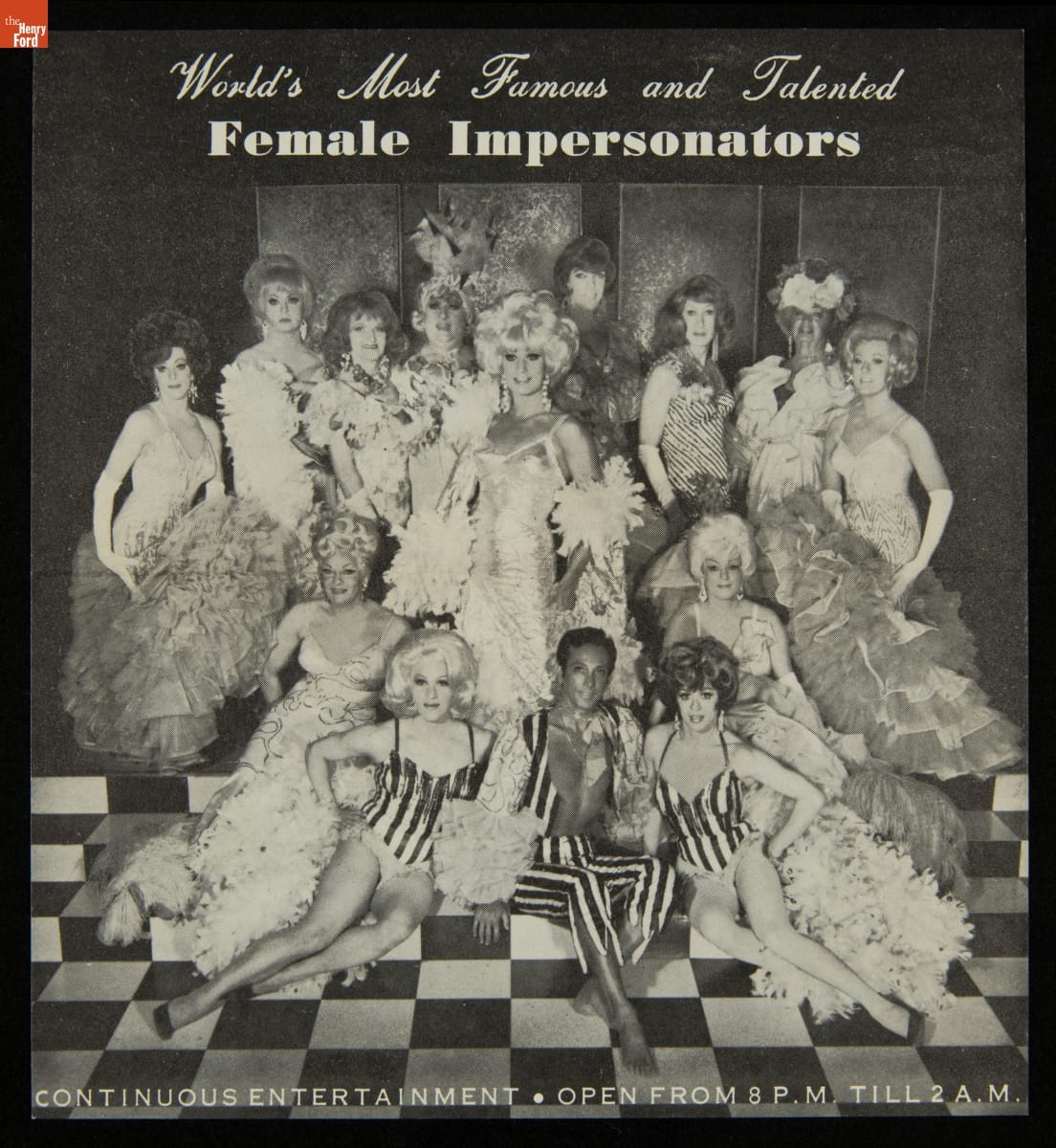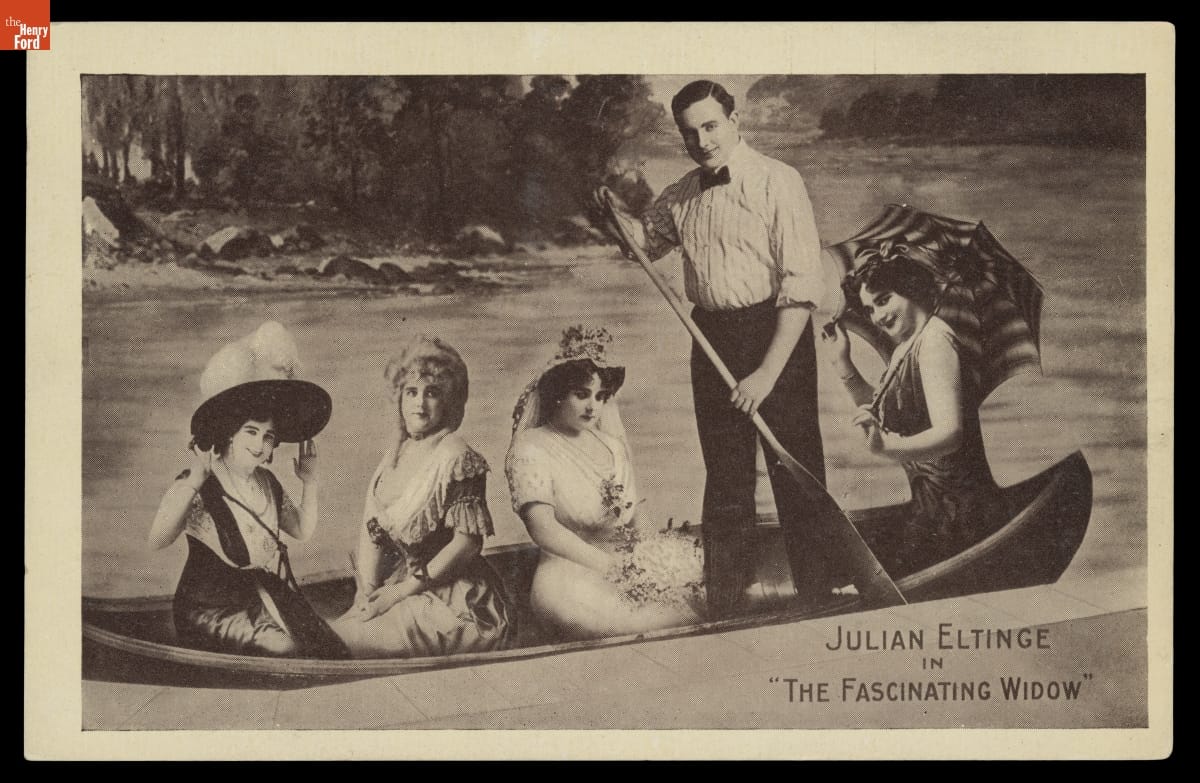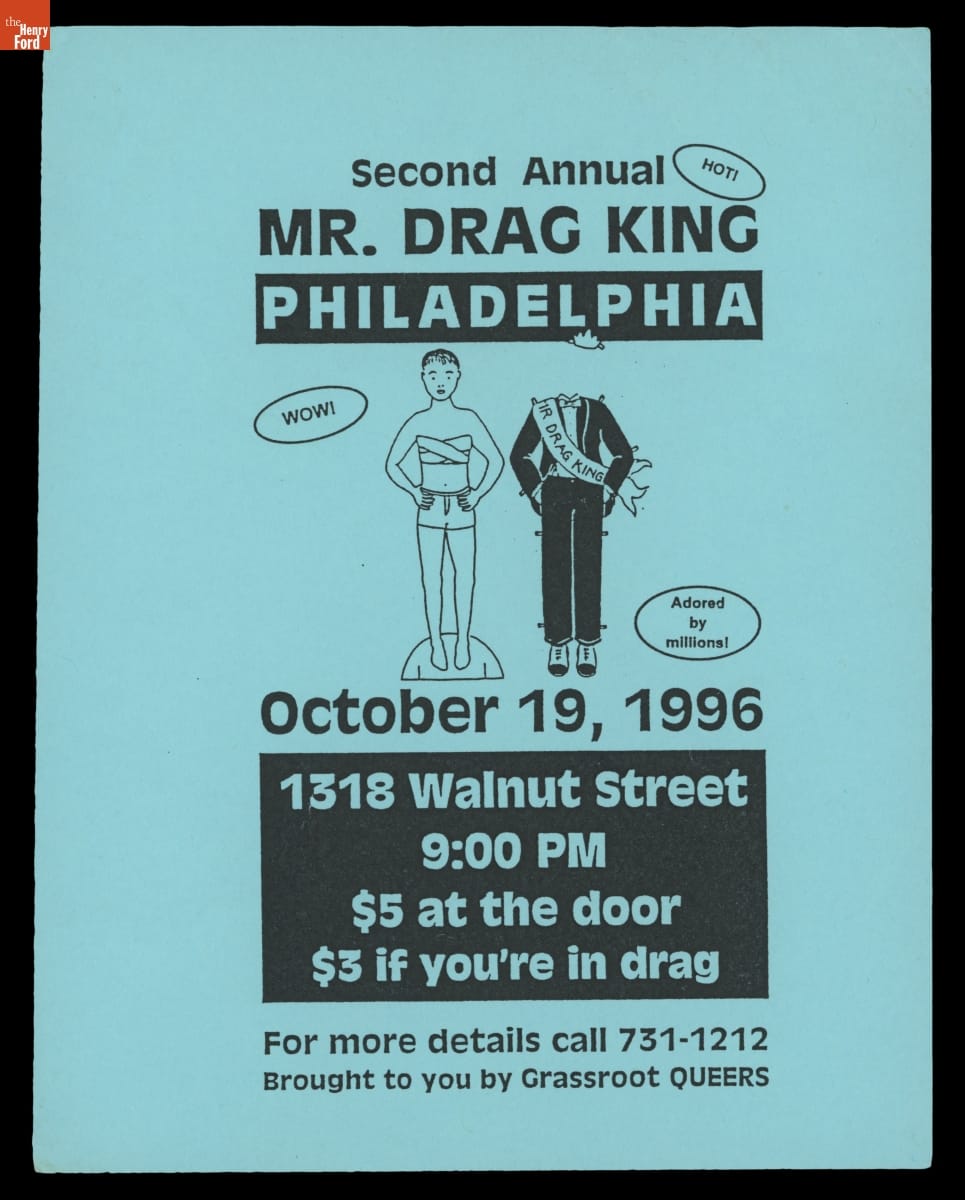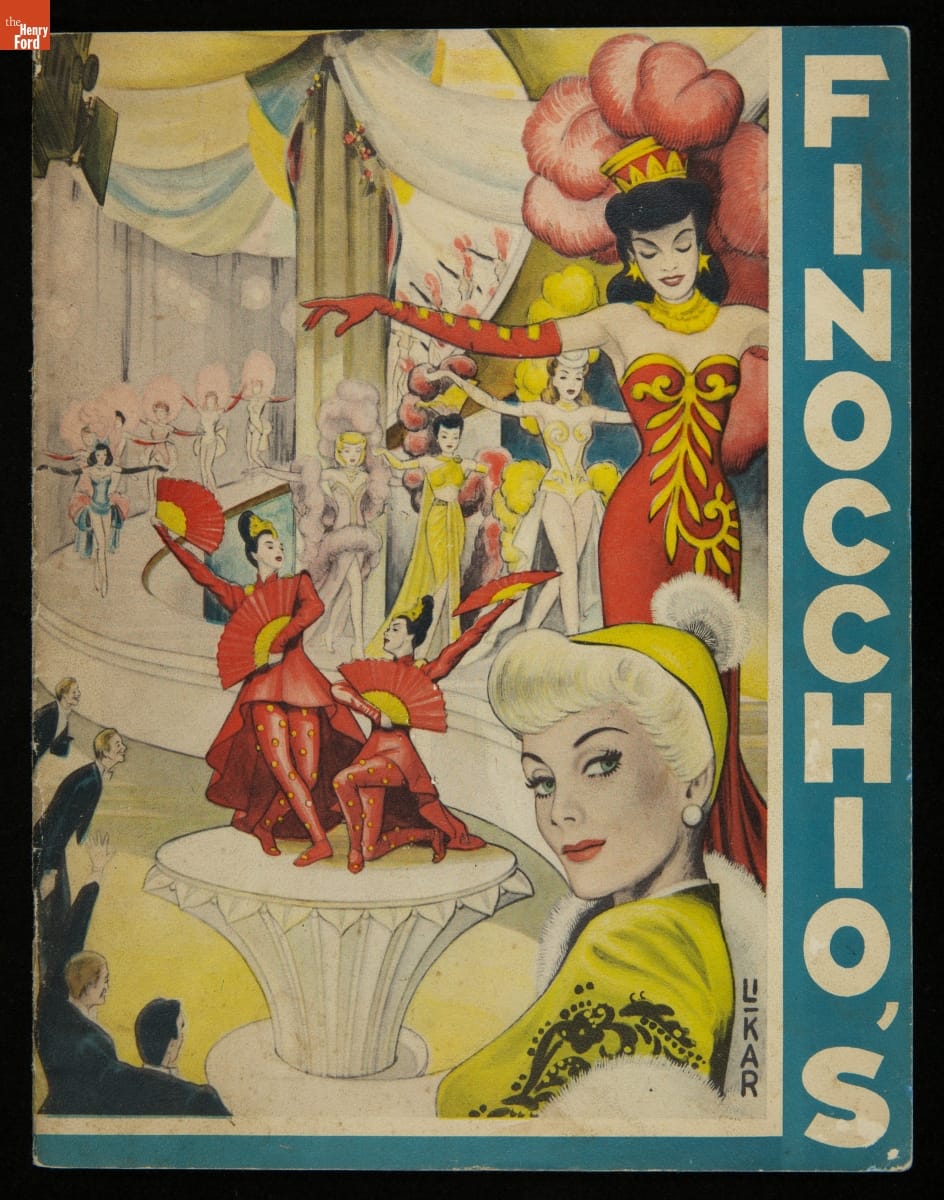Mary Judge: Fixture of Detroit’s Central Market
Through determination and resourcefulness, Mary Judge stood out from the other hucksters at Detroit’s Central Market in the latter half of the 19th century. Poor, single and an immigrant, Judge managed to make a living — and a name for herself — at a time when such women seldom gained financial independence.
Born in Sligo County, Ireland, around 1825, Judge emigrated with her parents as a baby, settled in Quebec, received her education at a convent and became a nun. Judge left her order but remained a devout Catholic. When and how she came to the Midwest remains unclear, but a Detroit-based relative of her legal guardian helped set her up as a huckster at the vegetable building at Central Market, the city’s bustling agricultural marketplace, by 1863.

The vegetable building at Detroit Central Market, 1884. / THF139107
Continue Reading
Unions and Mandela: A Fight for Equality
Detroit. What comes to mind when you think about Detroit? Cars. Motown, of course! Labor unions. All these make sense, but do you also think of Nelson Mandela? Probably not. And United Auto Workers (UAW) support of Mandela? It probably never even crosses your mind. For most people, the first and frequently only thought that comes to mind is apartheid and Mandela's fight to stop the practice in South Africa.
Mandela was a union man. When he was president of South Africa (1994-1999), he declared, "The kind of democracy that we all seek to build demands that we deepen and broaden the rights of all citizens. This includes a culture of workers’ rights." He understood the importance of unions and the rights of workers. He knew that the organization of workers was vital to having a free and just society.

Button welcoming Nelson Mandela to Detroit on his 1990 Freedom Tour. / THF196997
Continue Reading
Honoring Indiana Autos at Old Car Festival 2023

Ford Model A cars were easy to find at Old Car Festival, but our spotlight this year fell on Indiana-based automakers. / Photo by Matt Anderson
Auto enthusiasts, bicyclists and folks just looking for a little fun descended on Greenfield Village over the September 9-10 weekend as we celebrated our 2023 Old Car Festival. More than 600 vintage automobiles and some 250 bicycles — none dating more recently than 1932 — participated in this beloved late-summer tradition.
Each year at the show, we spotlight a special theme. Generally, it’s a particular make or model or a specific style of automobile. (Last year, for example, we featured early American luxury cars.) For 2023, we went in a different direction, instead focusing our spotlight on a state. Our “Indiana Autos” theme allowed us to honor the many marques of the Hoosier State. More than 400 distinct automobile brands called Indiana home at one time or another, and the state’s automotive industry was second only to Michigan’s in its size and significance. From premium luxury vehicles to the greatest spectacle in racing, our Indiana neighbors had it all.
Continue ReadingBuilt to Serve: Detroit Central Market

Detroit Central Market vegetable shed in Greenfield Village, 2022. / THF190482
Cities like Detroit built public markets where growers, fish mongers, vendors and peddlers sold directly to customers. People of all ages, many nationalities and various occupations crossed paths in these spaces. Vendors paid rent and tried to outdo each other with their vegetables, fruits, flowers and other wares. Some hawked their services as chimney sweeps or day laborers. Customers, attracted by the variety, stayed for entertainment.

Detroit's original city hall building with market sheds behind, 1861-1871. / Detail, THF623873
Continue Reading
Moving Milk on the Railroad

Milk cans are visible on the carts at center in this view of the Leslie, Michigan, railroad depot in 1910. / THF204974
Many Americans consider milk an essential part of daily life. For more than a century, milk’s production has followed the same basic pattern. Raw milk is gathered at dairy farms, it’s taken to processors for pasteurization and bottling, and then it’s distributed to consumers. But milk is a perishable product that spoils quickly. In the 19th century, transporting raw milk from countryside farms to urban processors was a task beyond the limited range and speed of horse-drawn vehicles. Railroads rose to the challenge and developed a steady business moving milk.
Continue ReadingElsie the Borden Cow: Milk’s Marketing Miracle

Elsie the Borden Cow, depicted in a circa 1961 recipe booklet. Note her maternal apron and ever-present necklace of flowers. / Detail, THF296067
Mascots appear on so many of the products we see in advertisements or while shopping, it can be easy to look right past them. Or we might seek out our favorites — characters we love so much, they’ve secured our allegiance to particular brands. With names and backstories, these mascots can seem at once familiar and absurd. Why do companies invest so much in developing them? Because, under the right circumstances — as with Elsie the Borden Cow — mascots can resonate deeply with consumers, boosting sales and generating brand loyalty.
Continue ReadingRuPaul, Drag Race, and the “Werk” that Came Before
"We’re all born naked, and the rest is drag.” — RuPaul
RuPaul Charles was born on November 17, 1960 in San Diego, California. His parents, Ernestine “Toni” Fontenette and Irving Charles, divorced by the time he was 7; although Ru and his three sisters would continue to live with their mother, older twins Renetta and Renae played a major role in raising Ru. Toni was fiercely supportive of her son, though, despite struggling with her own depression, never doubting that he would be a star one day (a prediction that had been shared with her by a psychic). She would, of course, be correct.
As he grew up — eventually moving to Atlanta with Renetta, where he attended a performing arts school — RuPaul was inspired by divas like Diana Ross and Cher, the punk rock aesthetic and androgynous performers like David Bowie, the irreverence of Monty Python’s Flying Circus, the drag queen and ballroom house founder Crystal LaBeija, and queer cult classic The Rocky Horror Picture Show; these icons would go on to shape his drag performance. In the 1980s, Ru began performing in bands, and producing and starring in underground films, including the Starbooty (also spelled as Starrbooty in some instances) trilogy, a send-up of Blaxploitation films.
Continue ReadingFarm-Made Cheese in a Big City Market
IMLS Agriculture & Environment Grant Work Continues
The Henry Ford received funding from the Institute of Museum and Library Services to increase physical and digital access to agricultural and environmental artifacts. Staff from collections management, conservation, the photo studio, registrars and curatorial departments have worked with 1,200 items to date. Over the two-year grant period (September 2022 through August 2024), 1,750 objects will be conserved, cataloged, digitized and rehoused.
The IMLS grant has helped reunite several items donated by one farm family to The Henry Ford in 1973. These items were all used on a general farm owned and operated by William Saxony Rider (1857-1937) and his wife, Elizabeth Stephenson (1866-1948), in Almont, Michigan. Their daughter, Marion E. (1900-1974), remembered that her mother and father “made and marketed enough of this fine-tasting [cheddar] cheese to build a 300-acre farm.” That work likely occurred during the early 20th century, a time period described as the Golden Age of Agriculture, when market prices exceeded the cost of agricultural production and farm families prospered.
Continue ReadingFrom Work to Play: Industrial Locomotives and Park Trains

Opened in 1947, the Edaville Railroad quite literally transformed from an industrial railroad into an amusement attraction. / THF238726
Ellis D. Atwood only wanted to make his Massachusetts cranberry-farming operation more efficient. He’d purchased four steam locomotives and several railcars from narrow-gauge railroads in Maine, and he’d built 5.5 miles of track winding through his cranberry bogs. The trains hauled supplies into the bogs, and they carried harvested cranberries out of them. But then Atwood began offering rides at five cents a ticket.
Intentionally or not, Ellis Atwood discovered an entirely new business model for himself. Using his initials, EDA, for inspiration, Atwood named his operation the Edaville Railroad. Following his death in 1950, subsequent owners added rides and amusements and turned the operation into one of New England’s most popular destinations. The Edaville Railroad morphed from an industrial railroad into a “park train” – a railroad operated as part of a larger attraction.
Continue ReadingLegendary Dress: Iconic Histories of Drag Performance

"Fabulous Finocchio's," 1960-1970 / THF708323
Bing Crosby and Danny Kaye lip-syncing “Sisters” in White Christmas…is drag.
Bugs Bunny dressed up as Lady Bunny to escape Elmer Fudd…is drag.
Robin Williams disguised as the nanny Mrs. Doubtfire…is drag.
Melissa McCarthy parodying Sean Spicer on Saturday Night Live…is drag.
Examples of drag performance in mainstream media are everywhere. For as long as society has reinforced ideas of gender norms, people have found humor and joy in playfully rejecting them.
Drag is a form of theater. Drag performers adopt personas and dress in over-the-top outfits to poke fun at the way society perceives masculinity and femininity. Drag holds a mirror to society. Although it has been a safe haven for the LGBTQ+ community, drag is for everyone.
In 2023, these topics were explored in a temporary exhibit, Legendary Dress: Iconic Histories of Drag Performance, in Henry Ford Museum of American Innovation. Placed in historical lineage, the story of drag — and its performers — relates to the themes of identity and community that connect to The Henry Ford’s Social Transformation collections.


Images of Legendary Dress pop-up exhibit at Henry Ford Museum of American Innovation, September 2023.
Drag’s First Megastars: The Theater & Vaudeville
Wearing clothing assigned to a different gender has been common throughout history — especially on the stage. In ancient Greece, women were prohibited from acting, so men performed as female characters. Today, both men and women perform in roles that differ from their gender identity — to explore, for convenience and for comedy.
British playwright William Shakespeare famously explored gender fluidity in his plays through cross-dressing, notably in Twelfth Night and As You Like It.
Vaudeville was a genre of comedy entertainment popular from the 1880s into the early 1930s that was considered wholesome. “Impersonators” (actors or actresses dressed in drag) became celebrities for this craft. Impersonators did not always identify as queer, and their performances were not always meant to signal queerness to audiences.
Julian Eltinge was the most famous and highly paid female impersonator of the early 20th century. He embodied gaudy elegance, wore glamourous gowns and perfected female mannerisms. The 1910 musical comedy The Fascinating Widow was his first play to open on Broadway. A promotional image shows a manly Eltinge rowing a boat with four other versions of himself in drag — each a character from the play.

Julian Eltinge in "The Fascinating Widow" at Forrest Theatre, Philadelphia, Pennsylvania, April 1912 / THF712153
Misunderstood Histories of Drag: The Cooper Do-nuts Riot
When people are forced to exist on the margins — especially because of legal or safety concerns — the truth behind their lived experiences can become muddled. Sometimes, important histories are lost, which is why many people in LGBTQ+ and drag communities fight to keep their stories alive by becoming their own archivists.
The Cooper Do-nuts Riot represents an inaccurate LGBTQ+-focused history that has become widespread. However, we recognize that stories sometimes take on a life of their own — and even when they are wrong, they still have the capacity to teach.
One night in May 1959, a group of patrons — including two drag queens — gathered at a 24-hour doughnut shop in Los Angeles. When police officers entered the building to harass them, a clash began: Doughnuts and coffee cups were thrown; arrests were made.
In his novel City of Night, John Rechy gave this account, repeated as fact. But there is little evidence that the Cooper Do-nuts Riot happened in the way described: no news reports, police reports or photographs exist.
What is true is that Cooper Do-nuts was a safe haven for LGBTQ+ people in the 1960s and continues to be an inclusive space today. In June 2023, the site of the first Cooper Do-nuts shop was marked as a historic landmark. During the plaque unveiling, the LAPD apologized for their documented violence toward LGBTQ+ Angelenos in the 1950s and '60s.

Image of Legendary Dress pop-up exhibit at Henry Ford Museum of American Innovation, September 2023.
Performance as Safe Space
Drag finds its fullest expression in community. But what happens when drag becomes villainized, forced to go underground? As an artistic expression, drag has endured for centuries because it has adapted to changing social and political pressures.
Drag king and queen competitions, coming-out parties and drag balls reigned supreme at nightclubs and queer spaces throughout the country in the second part of the 20th century. These events generally took place outside of the public sphere and became a safe space for the mostly LGBTQ+ community.

"Second Annual Mr. Drag King Philadelphia" Event Flier, October 19, 1996 / THF712087
An exception: Finocchio's nightclub opened in San Francisco and began featuring female impersonation shows just as the rest of the country turned away from them in the early 1930s. San Francisco’s laws against cross-dressing (in effect from 1863-1974) meant that the performers risked arrest if they stepped foot outside of the venue in drag. Finocchios closed in 1999 as the longest-running female impersonation show in the country.

"Finocchio's," 1960-1970 / THF708309
Recent Events: Sidetrack Bookshop
Sidetrack Bookshop is an independent bookstore located in downtown Royal Oak, Michigan. It is celebrated for its commitment to the LGBTQ+ community.
In March 2023, the store advertised a Drag Queen Storytime event for children and their families. Supporters of Drag Queen Story Hours see these events as education wrapped in entertainment — a place to promote inclusivity and acceptance of LGBTQ+ people from a young age.
A Michigan conservative group planned a protest, claiming the event was intended for “the grooming and sexualization of children.” The business held its ground, knowing that a demonstration would happen. Police provided crowd control for the 1,000 people that gathered outside of Sidetrack — the majority of whom were there to show support for the business and the rights of LGBTQ+ people of all ages.

Sidetrack Bookshop Drag Queen Storytime Event, March 11, 2023 / THF712149
Recent Events: Target & Pride
Target’s Drag Queen Bird figurine was launched as part of the company’s annual Pride-themed merchandise on May 1, 2023. After receiving viral attention on social media, a stock shortage caused this bird to become a collector’s item.
On May 24, 2023, Target issued a statement about its decision to move or remove Pride-themed merchandise in certain stores. The company cited safety concerns following backlash and vandalization by anti-LGBTQ+ activist groups.
Target’s decision received criticism from LGBTQ+ advocacy groups for what was perceived as a failure to stand with the community.

Pride Drag Queen Bird Figurine, 2023 / THF196639
Drag Queen Bingo
At the height of the AIDS epidemic, a Seattle nonprofit called Chicken Soup Brigade was founded to provide free meals and basic services to people living with AIDS. In the early 1990s, the organization held a fundraiser with the help of The Sisters of Perpetual Indulgence, a group of drag queens from San Francisco that dressed as Catholic nuns. This Gay Bingo, or what would later be called Drag Queen Bingo, was a huge success — standing room only!
Bingo continues to be a popular drag performance platform. FIVE15 in Royal Oak, Michigan opened in 2007 and has introduced many people to drag through drag queen bingo events that offer what the venue calls “side-splitting hilarity and gender-bending fun” — a key feature of these events that today take place all over the country.
.png?sfvrsn=5dba3401_0)
Image of Legendary Dress pop-up exhibit at Henry Ford Museum of American Innovation, September 2023.
Kristen Gallerneaux, curator of communications & information technology at The Henry Ford, and Katherine White, curator of design at The Henry Ford, collaboratively produced this exhibit and blog.

